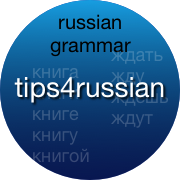Introduction to Directional Prefixes
In Part I of this course you learned how to express “going” on foot, by vehicle, flying, running, carrying, taking a friend somewhere, and more. But we often want to express a sense of direction: going up, down, in, out, across, and so on.
Probably every language has a way to express some notion of a direction. English does this in a number of ways:
- Verbs like “come” and “go” encode a sense of direction directly in the verb: “come” implies motion toward the speaker; “go” does not imply motion to the speaker. That’s why we say “come here” and “go over there,” but “come there” or “go here” sound a bit strange.
- English can use prepositions: to go in, out, across, through, and so on.
- English also uses verbs borrowed from other languages, such as “enter,” “exit”, “transverse,” and “circumnavigate.”
You’ll be glad to know that the Russian system is more consistent.
In Russian we’ll use a set of prefixes to express the direction of motion. They can be combined with all the basic motion verbs covered in Course I, so by the end of this course, you’ll be able to express things like entering, exiting, going across, running in, flying across, reaching a goal, and much more.
As an added bonus, many of these verbs are used figuratively. So when you’re comfortable with these new forms, you’ll also be able to express ideas like “it brought me to tears,” “he doesn’t get it,” and more.
Вперёд!
